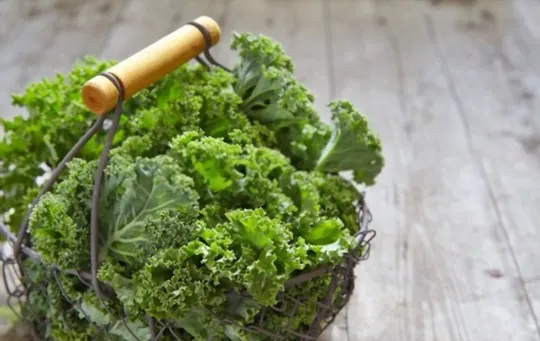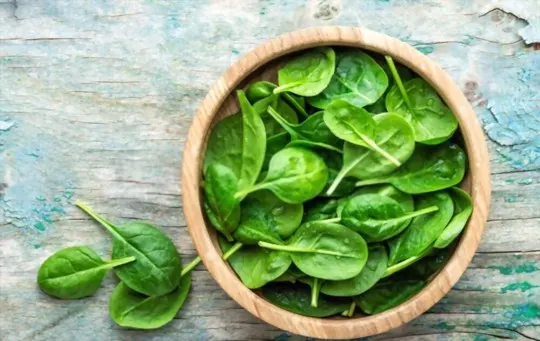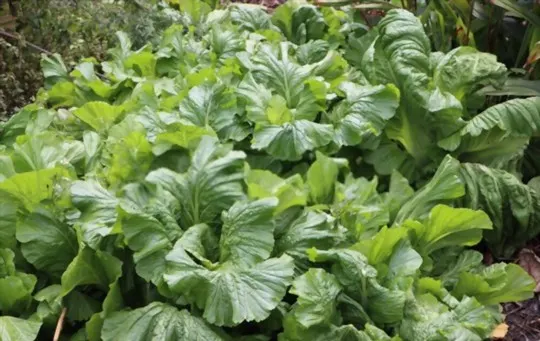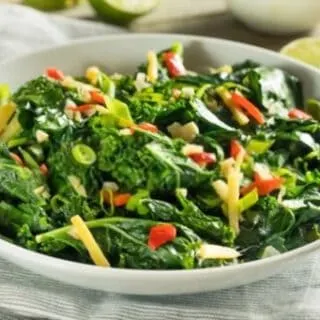Think collard greens are only for Southern cuisine? You’re in for a delicious surprise.
This leafy green is low in calories and packed with nutrients, making it a perfect addition to any meal.
There’s something about collard greens that screams “soul food”.
Maybe it’s their hearty texture or their rich, savory flavor.
Whatever the reason, these greens are a staple of Southern cooking.
And while they may take a little bit of time to prepare, they’re definitely worth the effort.
There’s nothing like biting into a crispy, fresh collard green.
But what do you do when, for whatever reason, you can’t find any at the grocery store? Don’t worry – there are plenty of delicious alternatives that will leave you just as satisfied.
Here are five of our favorites.
What are Collard Greens?

Collard greens are a type of leafy green vegetable that is closely related to cabbage and kale.
They are part of the Brassica family, including broccoli, cauliflower, and Brussels sprouts.
Collard greens have a long history and were first cultivated in the Mediterranean region more than 2,000 years ago.
They are a staple in many Southern dishes, such as Hoppin’ John and collard greens with ham hocks.
Unlike many other greens, collard greens get sweeter after cooking.
This makes them a versatile ingredient that can be added to various recipes.
Whether you’re looking for something to add to your next soup pot or want to try a new side dish, collard greens are a great option.
They are an excellent source of vitamins A and C, and they also contain a good amount of fiber.
Collard greens can be bought fresh, frozen, or canned.
They can be stored in the fridge for up to a week or in the freezer for six months.
The 5 Best Substitutes for Collard Greens
For those times when you can’t find collard greens, or if you’re looking for something different, here are five of the best substitutes:
1. Kale

Kale is a dark, leafy green vegetable related to collard greens and cabbage.
It is a member of the mustard family, and its scientific name is Brassica oleracea.
Kale can be eaten raw or cooked, and it is a good source of vitamins A, C, and K.
It also contains fiber, iron, and calcium.
Kale is usually available year-round, but it is in season in the fall and winter.
When cooking with kale, it is important to remember that it has a slightly bitter flavor.
As a result, it is often best to pair kale with other strong flavors, such as garlic or lemon.
When buying kale, look for crisp, dark green leaves.
Avoid kale that has yellow or brown spots, or that looks wilted—store kale in the refrigerator, wrapped in a damp paper towel, for up to five days.
Wash it in cold water and remove the tough stems to prepare kale.
Substituting kale for collard greens is an easy way to add more nutrients to your diet.
2. Spinach

Spinach is often lauded as a nutritional powerhouse when it comes to leafy green vegetables.
It’s rich in vitamins and minerals, and it’s a good source of fiber.
However, spinach is not the only leafy green that deserves attention.
Spinach can be enjoyed cooked or raw, and it is a versatile ingredient that can be used in a variety of dishes.
When shopping for spinach, look for crisp and dark green leaves.
Avoid wilted or yellowed leaves, which may indicate that the spinach is past its prime.
To prepare the spinach, wash the leaves thoroughly and cook them to your liking.
Spinach can be sauteed, steamed, or even eaten raw in salads.
However, you choose to enjoy it, adding spinach to your diet is a great way to boost your nutrient intake.
3. Turnip Greens

Turnip greens are a type of leafy green vegetable that is often overlooked.
Unlike other greens, such as spinach or kale, turnip greens have a slightly bitter flavor that some people find off-putting.
However, turnip greens are packed with nutrients and offer various health benefits.
They are an excellent source of vitamins A, C, and K and calcium and iron.
They also contain glucosinolates, which are compounds that have been shown to protect against cancer.
While both turnip greens and collard greens can be eaten cooked or raw, turnip greens are usually more tender and easier to chew.
Whether you’re looking for a healthy side dish or a tasty addition to your sandwich, turnip greens are a great option.
And, as with any leafy green vegetable, be sure to wash them well before eating.
4. Mustard Greens

If you’re a fan of leafy greens, you’ve probably had your share of kale and spinach.
But have you ever tried mustard greens? These slightly spicy greens are a great way to add variety to your diet.
These greens are a good source of vitamins A, C, and K and calcium and iron.
They are also low in calories and fat, making them a great choice for those watching their weight.
Compared to other greens, such as collard greens, mustard greens have a slightly higher vitamin C content.
Mustard greens also have a bitter flavor that some people compare to turnip greens or collard greens.
When choosing mustard greens, look for deep green leaves in color and free from brown spots or yellowing.
Avoid any greens that look wilted or chewed on by insects.
When you get your mustard greens home, store them in the crisper drawer of your refrigerator wrapped in a damp paper towel.
This will help them stay fresh for up to five days.
Rinse the leaves thoroughly under cold water when you’re ready to cook them.
You can then cook them in a variety of ways.
Mustard greens can be steamed, sautéed, or stir-fried.
They can also be eaten raw in salads or used as a wrap.
5. Swiss Chard

Swiss chard is a leafy green vegetable that is often compared to spinach or collard greens.
Like spinach, it has a mild flavor and can be eaten raw or cooked.
It is also a good source of vitamins A, C, and K.
However, Swiss chard is more similar to collard greens in terms of appearance, with large, flat leaves and thick stems.
It is also one of the few vegetables in multiple colors, including white, yellow, orange, red, and violet.
Swiss chard is a versatile ingredient that can be used in various dishes, from soups and stews to stir-fries and salads.
It is also a beautiful addition to any plate, making it a popular choice for home cooks and professional chefs.
Swiss chard and collard greens are often compared, as they are both leafy greens packed with nutrients.
However, they do have some notable differences.
For one, swiss chard is sweeter than collard greens.
Additionally, swiss chard has a thinner texture and is more tender than collard greens.
Conclusion
When it comes to substitutes for collard greens, a few options stand out as being the best.
First, kale is a great option because it has a similar taste and texture.
Additionally, mustard greens, spinach, and Swiss chard are good substitutes because they have a similar nutritional profile.
Finally, turnip greens are another good option because they can be cooked the same way as collard greens.
While there are other options, these four substitutes are the best in terms of taste, nutrition, and cooking.

The 5 Best Substitutes for Collard Greens
Ingredients
- Kale
- Spinach
- Turnip Greens
- Mustard Greens
- Swiss Chard
Instructions
- Choose your preferred substitute from the list of options.
- Organize all of your ingredients.
- Follow the substitution ratio to determine how much is required in your recipe.
